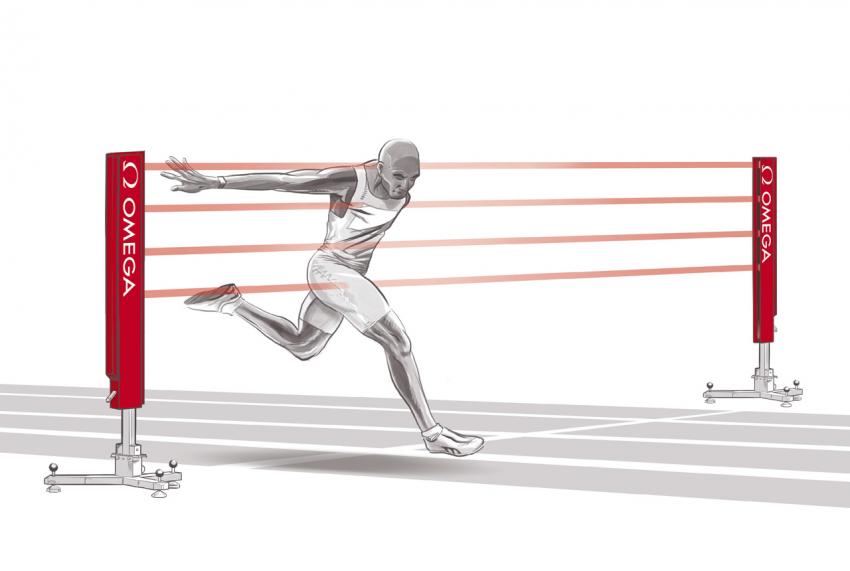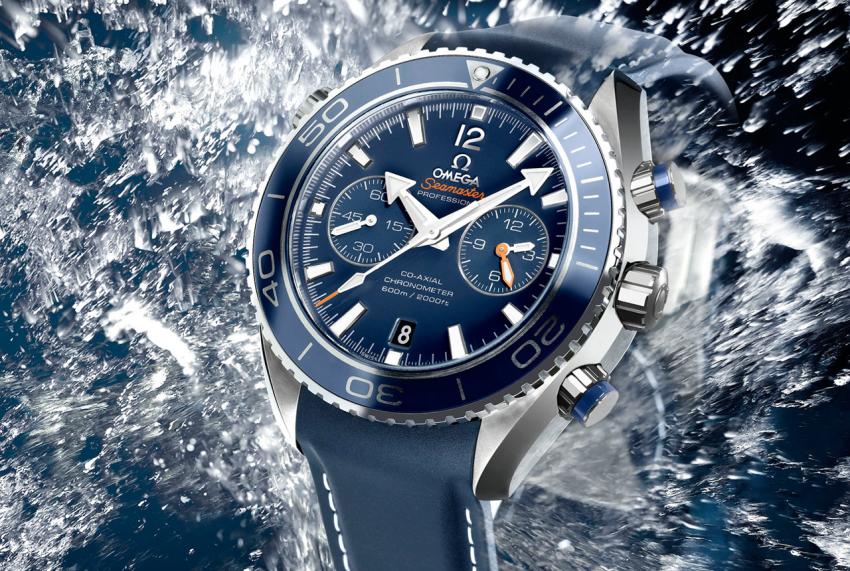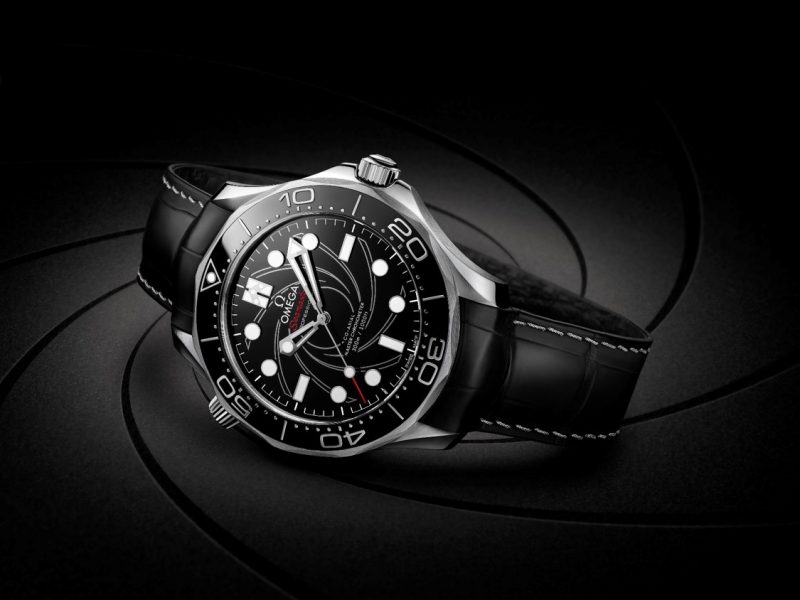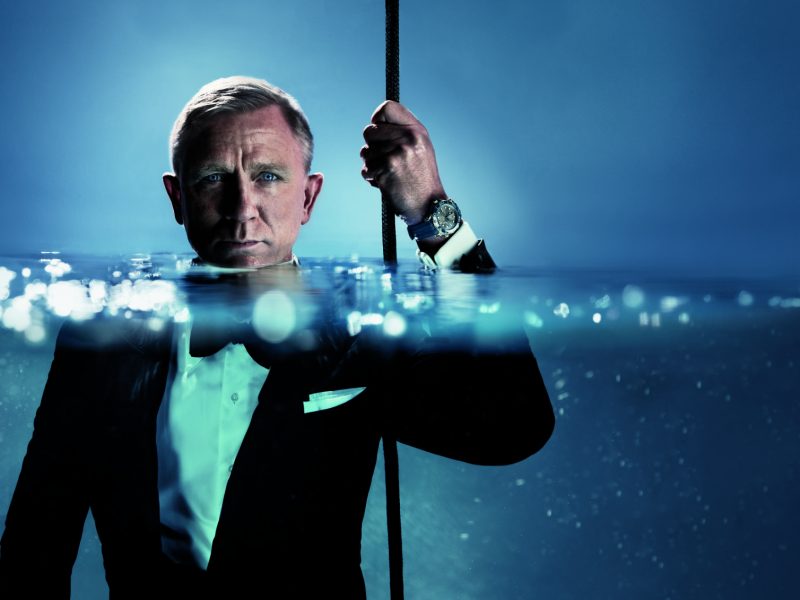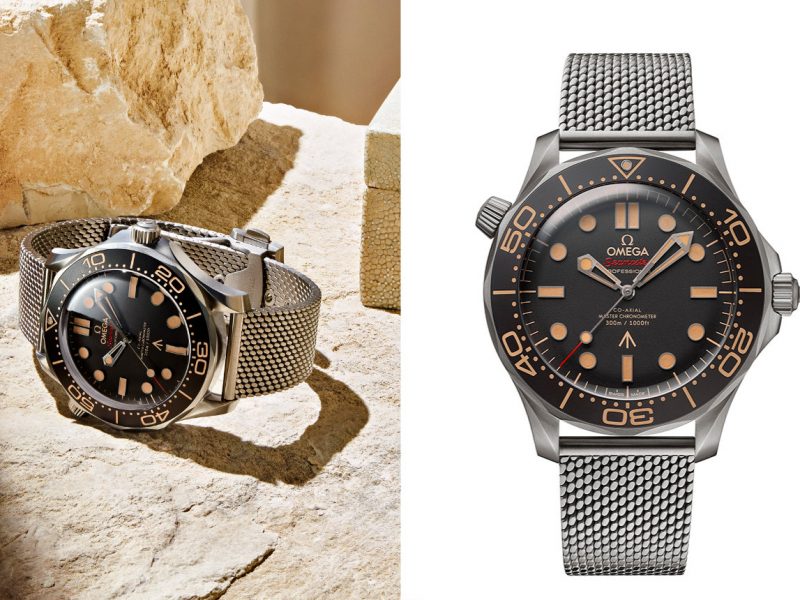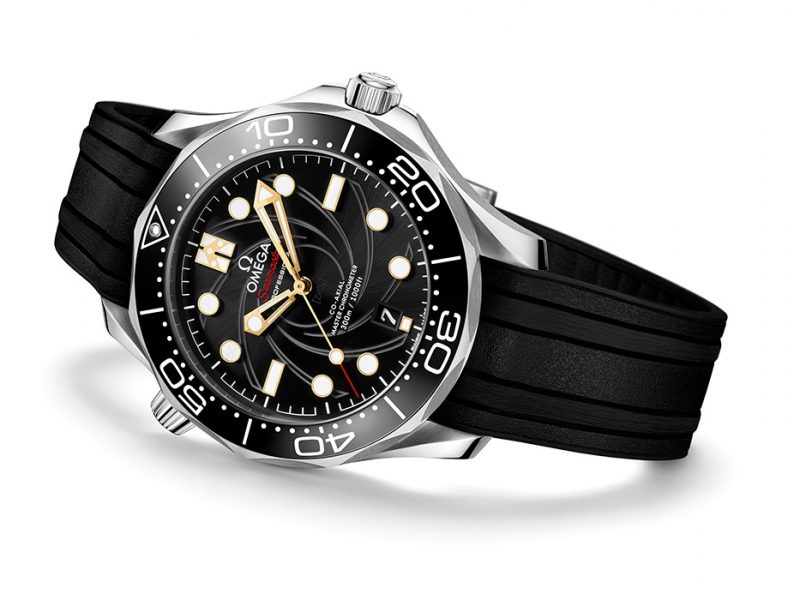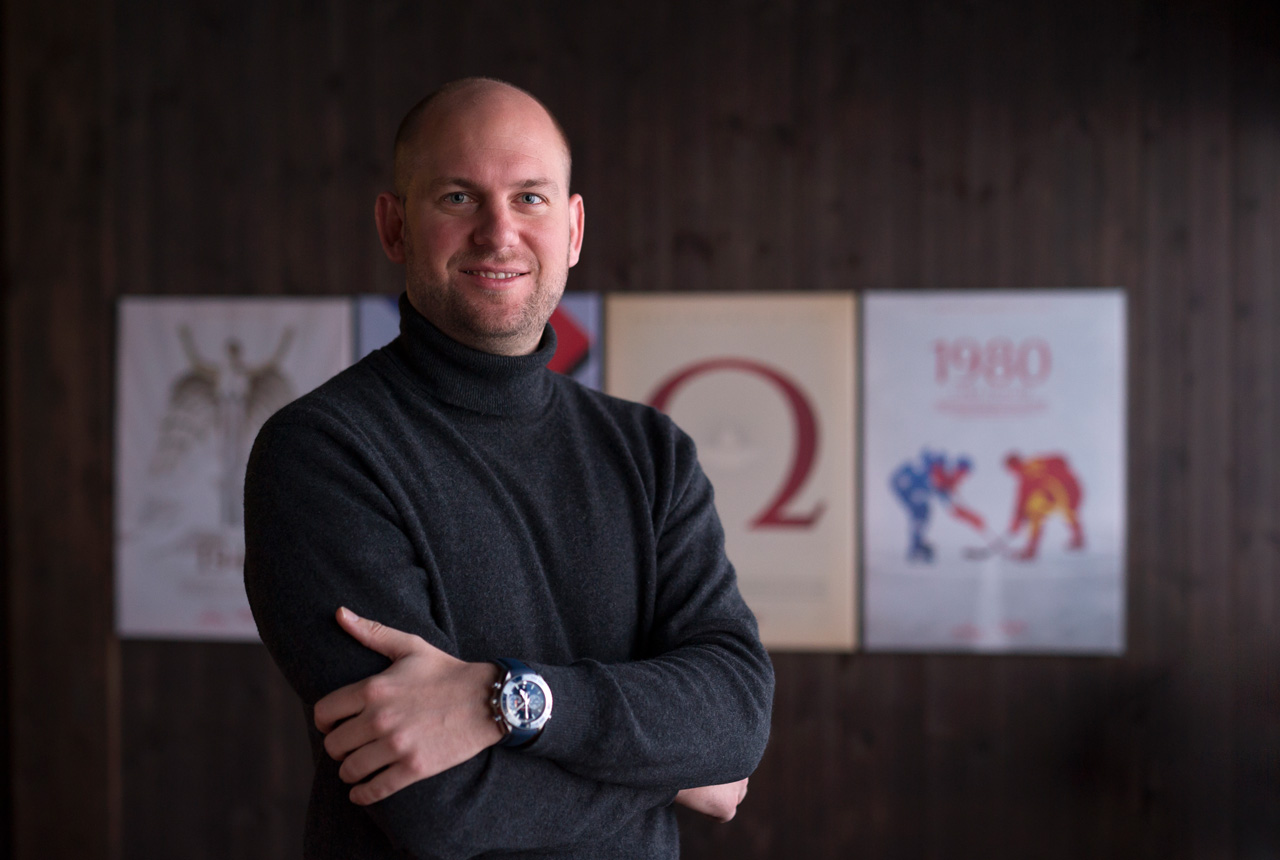
Exclusive: Alain Zobrist on timekeeping at the Olympics
The adventure of Omega with the Olympic Games started in 1932 at the Los Angeles Games, when all events were timed with just 30 stopwatches. Since then, Omega has been the official timekeeper of 26 Olympic Games, witnessing and measuring world records and Olympic records that made history.
If Omega was trusted during all this time with such a huge responsibility, it is because they never ceased to innovate, at every Game introducing new timekeeping instruments and always improving the existing ones. As sports were added and broadcasting evolved, Omega Timing was always found a way to adapt. Just to name a few: the first mobile photocell or the photofinish camera introduced at 1948, the Omegascope offering on-screen clock for television viewers since 1964, the “touch pad” in swimming, first used in Mexico City (1968), Montreal (1976) saw the introduction of moving images on video matrix boards, false start detection first introduced at the Los Angeles Games (1984), and the list can go on-and-on with computerized timekeeping, real-time results, etc.
This year too, at the Rio Olympics, Omega will introduce a whole host of new technologies that will make the results more accurate than ever. They will be also deploying 335 hi-resolution sport-specific scoreboards, designed to display not only text, but also animations, athlete pictures, and visual imagery. To discuss all these novelties, I had the opportunity to talk to Alain Zobrist, CEO of Omega Timing.
At Rio, Omega Timing will present a series of innovative technologies. How are you deciding to find better and more accurate devices, is it at the request of the IOC, are the individual sports federations asking for them, or it’s the result of a pro-active internal initiative of your R&D department?
Innovation is constant. We constantly innovate, we always want to improve and in the end of the day, we always try to provide the athletes with better technologies that enable them to perform better while they are competing. This is our ultimate goal.
Now, the feedback comes from three different players. The first one, being certainly from the sport and the athletes themselves. They would come to us: “Hey, I have an idea to develop this-and-that, what do you think? It would help me to start better, for example.” This is a very important input, and we also integrate athletes into the development process of our devices. Then, there is a second player, our Omega timekeepers, they are the ones who deploy and use the technology every day at sports competitions. They know the sports very well and they know the equipment very well, and they have ideas on how we can improve. The third player would be our own engineers. They know the technology very well and they also keep an eye on new technologies that are coming up. They would say: “Here is a new technology, why couldn’t we include in this device, or develop a new technology, or a new device with this technology?”
The three angles would be the sport and the athletes, our timekeepers and our engineers.
Before Omega Timing, you were part of the Marketing Department of Omega, a luxury watch company, and now you are the CEO of a cutting-edge technology company. How was the transition for you? Why is Omega Timing important for Omega?
Without Omega, Olympic Games could not happen. You need athletes, you need a venue where to compete, and you need results, otherwise you cannot say who won. We play a major role as the official timekeeper in the organization of the event and this is why it’s so important.
Right, I was in sports marketing before and now, I’m working for a sports technology company, but there is a word that links them together, it’s sports, and I love sports. The same as the timekeepers and the engineers here, we breathe sports at Omega Timing, it’s our passion. And I think the combination of all this makes me very happy of where I am.
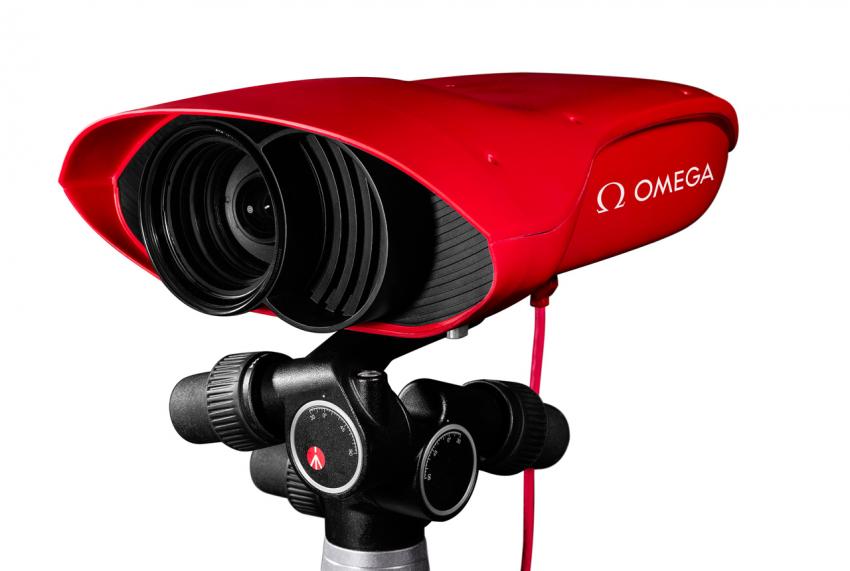
Photofinish cameras were first introduced by Omega at the 1948 Olympic Games of London. This year, in Rio, the new Scan’O’Vision
MYRIA makes its Olympic Games debut.
The history of Omega as timekeeper of the Olympic Games goes back to 1932 Los Angeles Games. Since then, there are several timekeeping landmarks that changed the Olympics and sports in general. Which instrument or device do you think will make history in Rio, and why?
You have to live history before it becomes history, I don’t know yet, what will become a landmark. The performance of an athlete is a lot more important, and I’m sure they will make history, not us.
We do have some new technologies on our end that we are going to bring to Rio and one of them is a crucial device for timekeeping, it is the Myria photofinish camera that we are going to deploy for the first time at the Olympics. It will take 10,000 digital images per second of the first 5 mm of the finish line and it will be deployed in all competitions where there is a finish line. It is the only device with which official times will be recorded and judged.
Photofinish cameras have a long history, going back to 1948. The Myria is a new generation and we will see how it will perform.
Then, there is a new barrier photocell that we are deploying in athletics. Previously, there were two photocells, now there are four that are adjustable in heights. Like I said before, we are working for athletes, and just the fact that the photocells are adjustable in height, it means that we can use them in Paralympics and measure intermediate times of wheelchair races.
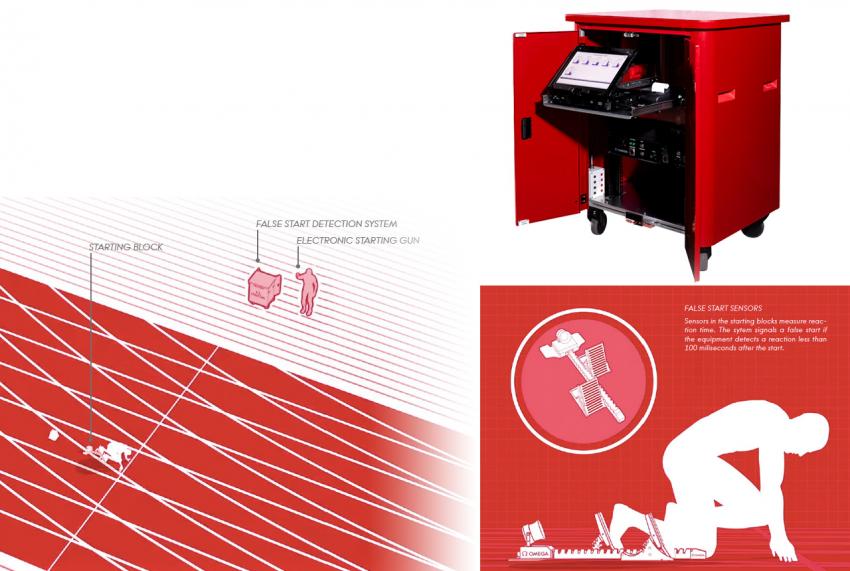
Sensors in the starting blocks measure reaction time. The system signals a false start if the equipment detects a reaction less than 100 milliseconds after the start.
We also have a new false start detection system in athletics, that helps obviously the judges to detect and understand which athlete on which lane made a false start, in case there was a false start. We have sensors in the starting blocks that measure 4,000 times per second what is happening at a specific block, so, we get accurate and precise information on what the athlete is actually doing at the starting block, prior to the start and right after.
Obviously, we also cater to the spectators in the stadium, trying to help them understand what happens at the competition, and one of these examples are the scoreboards in golf. They will be placed at the tee off position of some holes and they will indicate a whole bunch of information, like the distance of the ball, club angle, ball speed and pretty much everything that can be measured. These are information that was never accessible to golf spectators on site.
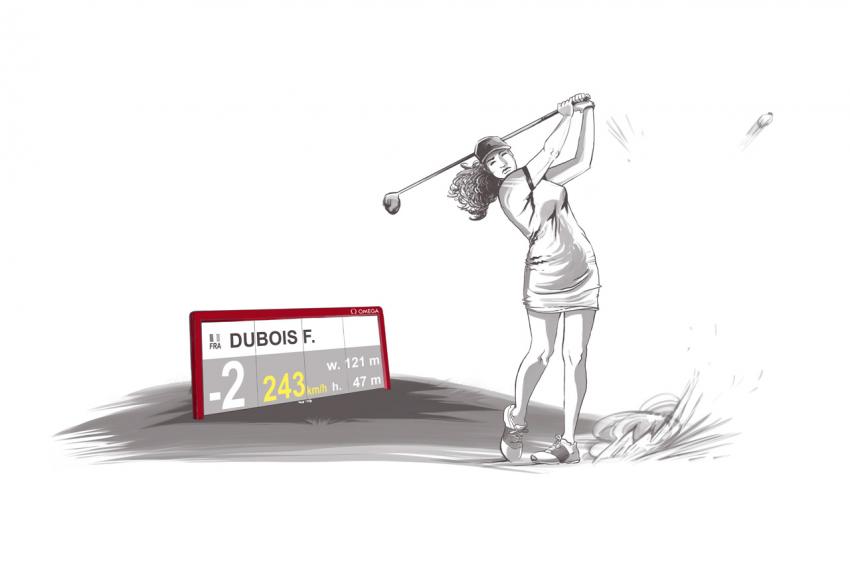
With golf making its debut at the Olympics, Omega Timing developed a new scoreboard, especially for this event.
Actually, one of my questions is related to this. Golf is a new sport at the games and OK, you have the scoreboard, but I was wondering about how do you capture all this info?
It’s a small little radar, that is not only a radar and the most important thing while developing this technology was that it enabled us to get real-time information. It’s easy to gather information and two minutes later to distribute it, but we pay a lot of attention to obtaining real-time information. And if you are thinking of swimming, for example, it is the only sport where the athlete stops his time, and between the moment he stops his time on the touchpad and the time getting in the control room, then it’s treated and sent to data handling and distributed to TV, scoreboards, etc., the entire process takes less than one hundred milliseconds. This live component of the information that we provide through our systems is key, especially in golf it was important for us to achieve this live factor.
You are going to Rio with 480 professionals and 450 tons of equipment. In which way is Rio different from other games when it comes to climate, logistics, security?
Every host city is different: different language, different culture, different climate, but it doesn’t really matter where we go. Our goal remains the same, we want to provide the best, most accurate and precise results to the athletes participating. No matter where we are.
There are challenges everywhere, but there is nothing unexpected.
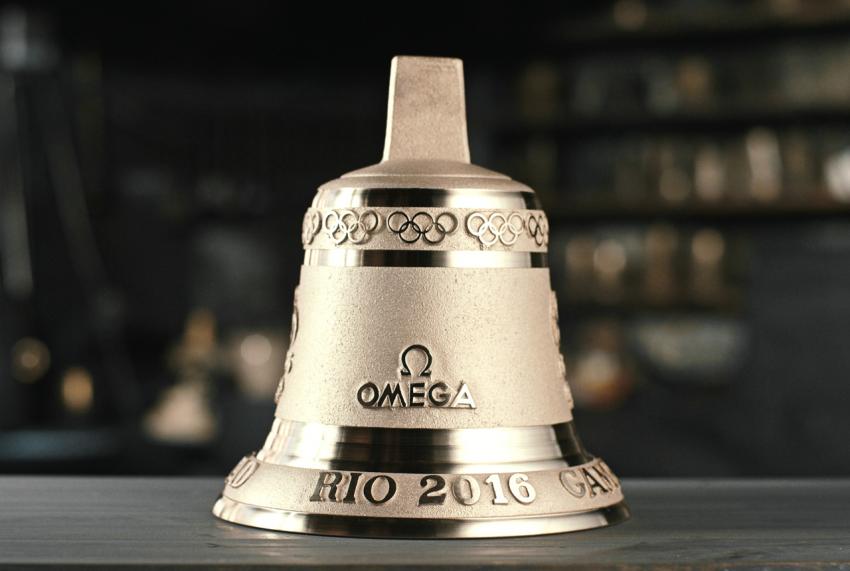
In Rio, there will be 21 Omega last-lap bronze bells. Forged, almost entirely by hand at Blondeau’s foundry near the town centre of La Chauxde-Fonds in the Swiss mountains. Each last-lap bell is branded with the RIO 2016 and the Omega logo and encircled with the words: RIO 2016 – GAMES OF THE XXXI OLYMPIAD.
I find the Omega last-lap bronze bells fascinating! Among all your hi-tech equipment, you keep using a Bronze Age hardware, a beautiful homage to the past. What will happen to them after the games?
They will take them back and they will end up in museums. They are very rare, we don’t produce many of them.
In the old days, the Olympics could be only followed live by people present at the event, later live TV broadcasting came into play, but for Rio, I will probably follow the event on the Internet. How did the Internet change the way you collect and share data?
I would say, it is an additional tool that can be used. We live in a fast-moving world and technology is developing very fast. Our systems follow these changes closely, it’s a natural evolution of innovation that can be integrated into the services that we provide.
These days everyone is jogging, cycling, swimming with wearable gadgets. Do you see them opening up new paths to sports timekeeping and data collection?
Yes, for sure. I think it goes down to basics: we provide results and data to professional athletes and the requirements in terms of precision and reliability are different and can not be compared. We can’t do any mistakes when an athlete is running the final of his competition. The impact is different, the consequences are completely different, so the technology that we use at the moment are not comparable.
Looking ahead, in two years, we’ll have the Winter Games in PyeongChang, and 2020 the Olympic Games in Tokyo. Even if you can’t be too specific, in general, what will the future of sports timekeeping bring?
I hope you will call me two months before the opening ceremony in 2018 and the same in 2020 and we can talk about it then. What I can say is that time won’t change and a second will always be a second, but the way we measure a second and the understanding of what happens in one second, I think, there we still have a lot to learn.
In your official picture, you are wearing a titanium Planet Ocean 600 M Co-Axial Chronograph. Not that I would question your choice, but I’m curious, why this particular model?
I think it’s a beautiful watch. The technology that went into this model is amazing. It has a co-axial movement that reduces the friction of the movement, it has a full titanium case which makes it very light and enjoyable to wear. I think it’s just great because I can wear it with jeans or I can wear it with suits as well. It’s a very nice watch that I like a lot! It looks great and it tells the time.
Thank you for your time and I will definitely watch the Olympics from a different perspective, I will thinking of you and your wonderful team working behind the scenes. I’m looking forward to the games!
Absolutely, we too! Thank you for your interest!


